
Meridian is a city in and the county seat of Bosque County in Texas, United States. It is forty-seven miles northwest of Waco. The population was 1,396 at the 2020 census.

Silverton is a city in Briscoe County, Texas, United States. The population was 629 at the 2020 census.

Baird is a city and the county seat of Callahan County, Texas, United States. Its population was 1,479 at the 2020 census. The city is named after Matthew Baird, the owner and director of the Texas and Pacific Railway. The railway depot is now operated as the visitor center and a transportation museum.

Comanche is a city located in Comanche County in the U.S. state of Texas. The population was 4,211 at the 2020 census. It is the county seat of Comanche County.

Rotan is a city in Fisher County, Texas, United States. The population was 1,332 at the 2020 census, down from 1,508 at the 2010 census.

Fairfield is a city and county seat of Freestone County, Texas, United States. The population was 2,850 at the 2020 census, down from 3,094 at the 2000 census. It was founded in 1851.

Pearsall is a city in and the county seat of Frio County, Texas, United States. The population was 7,325 at the 2020 census, down from 9,146 at the 2010 census.

Haskell is a city in central Haskell County, Texas, United States. As of the 2020 census, the city population was 3,089. It is the Haskell county seat.
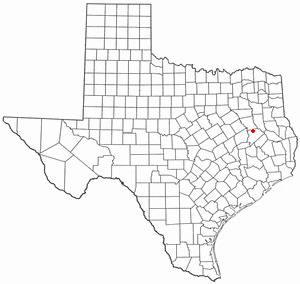
Grapeland is a city in Houston County, Texas, United States. Its population was 1,465 as of the 2020 census.

Stinnett is a city in and the county seat of Hutchinson County, Texas, United States. The population was 1,650 at the 2020 census.

Benjamin is a city in and the county seat of Knox County, Texas, United States. Its population was 196 at the 2020 census, making it the least-populated county seat in Texas.

Centerville is a city in Leon County, in the U.S. state of Texas. The population was 905 at the 2020 census. It is the county seat of Leon County. Centerville was so named as it is near the geographic center of Leon County.

Brady is a city in McCulloch County, Texas, United States. Brady refers to itself as the "Heart of Texas", as it is the city closest to the geographical center of the state, which is about 15 miles northeast of Brady. Its population was 5,118 at the 2020 census. It is the county seat of McCulloch County.
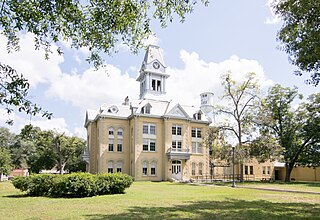
Newton is a city in and the county seat of Newton County, Texas, United States. The population was 1,633 at the 2020 census.
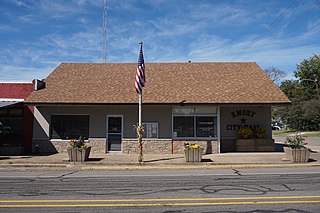
Emory is a city in Rains County, Texas, United States. The population was 1,239 at the 2010 census. It is the county seat of Rains County. Previously known as Springville, the city and county are named after Emory Rains, who was a legislator from the area. Rains was the author of the Homestead Law of Texas, which was later used as a model for the protection of homesteads throughout the United States. Special legislation passed to create Rains County called for the citizens to vote on the location of the county seat and for that selected town to be named Emory.
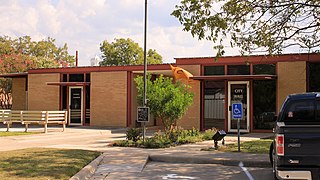
San Saba is a city located in, and the county seat of, San Saba County, Texas, United States. It was settled in 1854 and named for its location on the San Saba River and for Sabbas the Sanctified. Its population was 3,099 at the 2010 census.
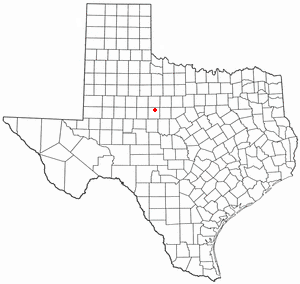
Tye is a city in Taylor County, Texas, United States. The population was 1,176 at the 2020 census. It is part of the Abilene, Texas Metropolitan Statistical Area.

Woodville is a town in and the county seat of Tyler County, Texas, United States. The town is intersected by three U.S. Numbered Highways: U.S. Route 69, U.S. Route 190, and U.S. Route 287. The population was 2,403 at the 2020 census. It is the county seat of Tyler County. The town was named after George Tyler Wood, governor of Texas from 1847 to 1849.

Ackerly is a city in Dawson and Martin Counties in the U.S. state of Texas. As of the 2020 Census, the population was 264. The Martin county portion of Ackerly is part of the Midland-Odessa metropolitan area.
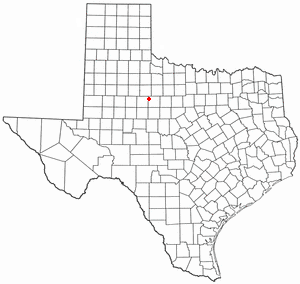
Hamlin is a city in Jones and Fisher Counties in the U.S. state of Texas. The population was 1,831 at the 2020 census. The Jones County portion of Hamlin is part of the Abilene, Texas metropolitan area.




















